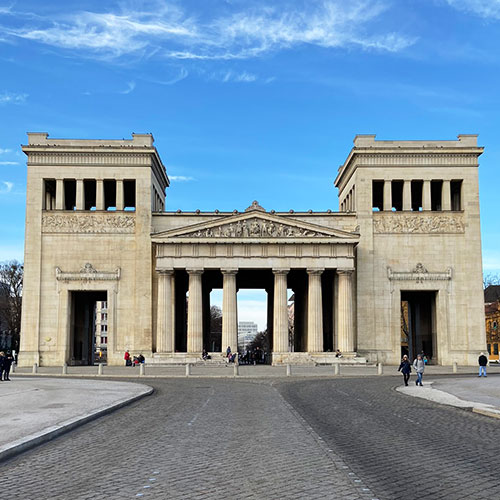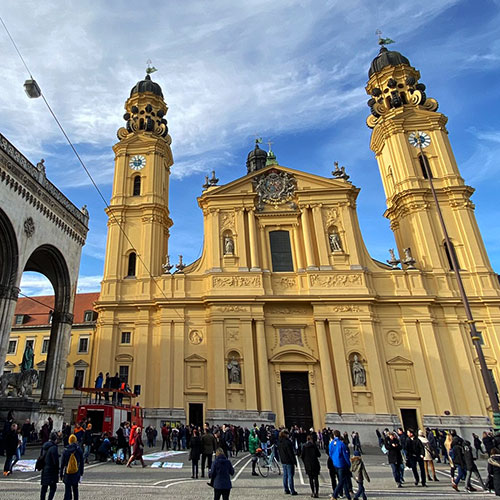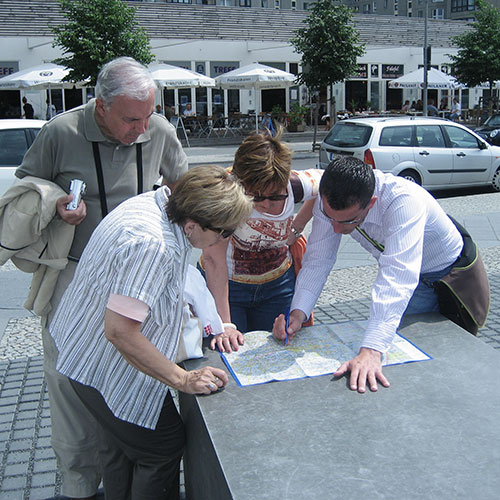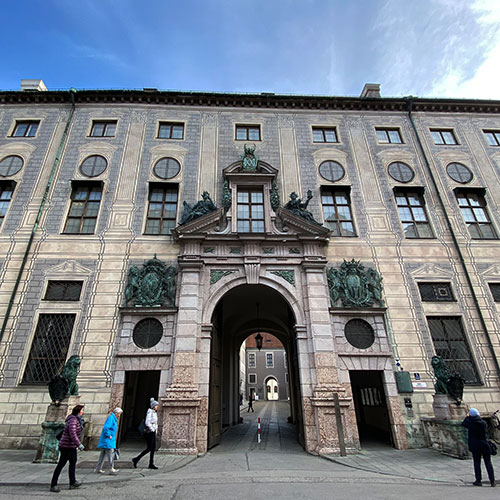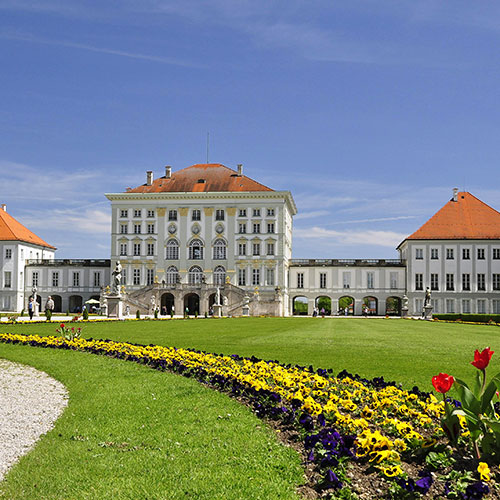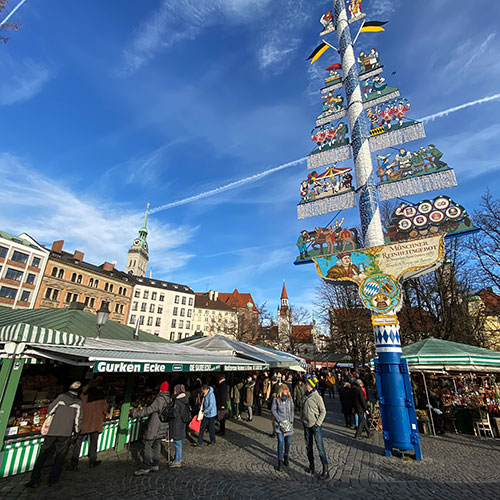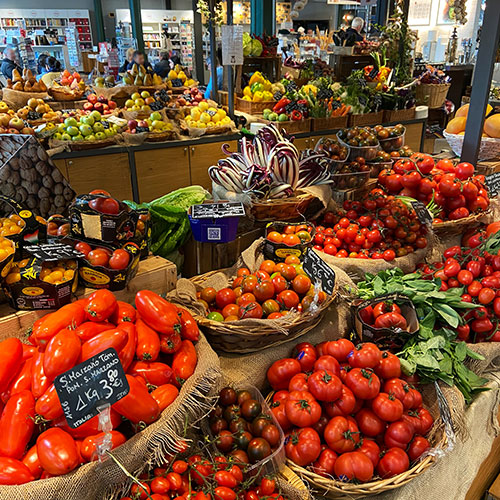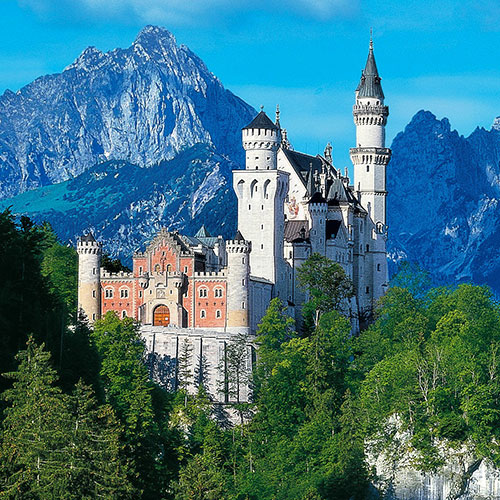The History of Munich
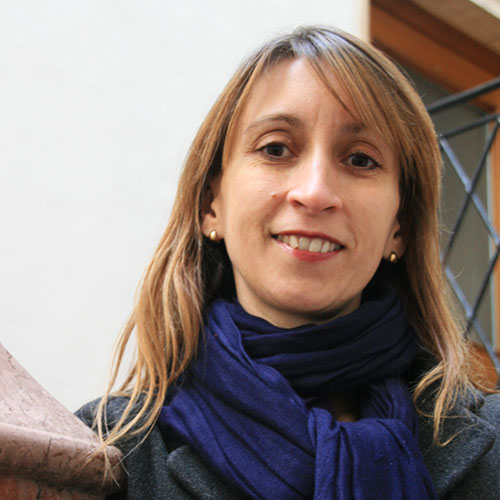
The history of Munich began in 1156 when the Duke of Saxony, Henry the Lion, was appointed by Emperor Barbarossa as the new lord of the Duchy of Bavaria. Without delay, the Duke burned down the Unterföhring Bridge belonging to the Bishopric of Freising and built a new bridge over the Isle of Istar (on the site of the present Lüdwigsbrücke). The reason for this manoeuvre; the Duke wanted to recover the salt tax from the Bad Reichenhall mines previously collected at the bridge by the Bishop of Freising. As the new bridge was located near a Benedictine monastery, thus "to the monks", (Mönchen in German), the new town took the name of "Zu den Munichen" and then Munich in 1158.
One dynasty sums up the inseparable history of Munich with Bavaria, it is the House of the Wittelsbach whose founding member was in 1180, Otto of Wittelsbach who became Duke of Bavaria (until 1240 Munich was the property of the Bishopric of Freising), 738 years later, November 7, 1918 marks the end of this saga when Kurt Eisner proclaimed Free Bavaria and the end of the reign of Ludwig III of Bavaria.
Now here are the key dates in Munich's history :
Thanks to the bridge and the salt market, Munich soon benefited from the right to customs and to mint coins, then in the 13th century a Municipal Charter arrived, Munich officially became a "City" and the first fortifications were built. In 1255, on the occasion of the division of the Duchy of Bavaria into two parts, Munich took over the function of Capital of Upper Bavaria.
In 1314, Ludwig (IV) of Bavaria was elected Emperor of the Holy Roman Empire, making him the first member of the Wittelsbach family to head the powerful Empire. After a fire in Munich in 1327, Emperor Ludwig IV rebuilt the city and gave it the status of "Great City" and first residence of the Emperor. The flag of Munich has borne the black and gold colours of the Empire since that time.
At the end of the 14th century, the popular tumult having led to several insurrections against the dukes, a new castle-residence was erected on the outskirts of the city (the famous "Residenz" which we invite you to visit) and a new fortification further extended the dimensions of the city (1429) in order to better protect the city against Hussite attacks. Munich experienced a cultural and architectural boom in the transition from the Gothic to the Renaissance, especially after the reunification of all of Bavaria under Albrecht IV, making Munich the Capital of Bavaria (1506) and one of the European centres of the Renaissance and Counter-Reformation.
Under Maximillian I Munich also became the residence of an Electorate (1623 - the 8th elector of the Emperor of the Holy Roman German Empire) followed by darker years with the occupation of the city by Swedish troops (the city had to pay a heavy price to be spared from devastation) and the plague which cost the lives of a third of the population. However, Munich quickly recovered under Elector Ferdinand Maria with many Italian Baroque buildings that we can still admire today.
The 17th century is marked on the one hand by political tensions between the Wittelsbach and Habsburg (Affair of the Spanish Heritage War) who occupied the city twice, on the other hand, it was during this century that the city laid the foundations for rapid economic and demographic development. Exactly 300 years after the reunification of Bavaria, Napoleon's foundation in 1806 of the Kingdom of Bavaria with Munich as its capital forever rooted the city at the foot of the Alps in the heart of Europe with a growing population; just 24'000 inhabitants in 1700 with a doubling of the population every 30 years, in 1871 already 170'000 inhabitants, in 1933 840'000 and today 1'330'440 inhabitants!
In the 14th century , King Ludwig I of Bavaria (1825-1848) left the greatest imprint on the present-day town with the development of Ludwigstraße, the Royal Square and the extension of the Residence. His son Maximillian II (1848-1864) promoted science and the arts above all, and then came the best known of Bavarian kings, Ludwig II of Bavaria, a king perhaps, but one who cannot be compared with his ancestors, a king who gave free rein to his Wagnerian fantasies by building mythical castles such as Neuschwanstein. In 1886 the reindeer were taken away from Ludwig II of Bavaria because of his mental instability and until 1912 it was Prince Regent Leopold and then his son Ludwig who held power, the latter even having the title of King (Ludwig III) in 1913 before the revolutionary events that made Bavaria a free state and marked the end of the 738 years of the Wittelsbachs' rule.
Towards the end of the First World War, on 7 November 1918, King Ludwig III was overthrown and the Free State of Bavaria was proclaimed by the Social Democrat Kurt Eisner (the Minister-President was assassinated on 21 February 1919). Unfortunately, the promising democratic beginnings of Bavaria and the Weimar Republic were soon overshadowed by the establishment of the National Socialist Party (NSDAP) in a Munich brewery in 1920, which was to become its capital. On November 9, 1923, Adolf Hitler's movement attempted a coup d'état (the Brewery Coup) which failed. Ten years later, when Hitler came to power, the first concentration camp of Dachau was built by Himmler in the suburbs of Munich (the site can be visited) even if there was resistance, as in the case of the student group "White Rose - Die Weisse Rose" and the failed attempt of Johann Georg Elser in Munich in 1939 (Hitler left the room 13 minutes too early to take a train instead of a plane as planned).
After the War, under the American occupation, many works were undertaken to restore the city to its former glory. Since then, the city has regained its reputation as Germany's cultural capital with its many museums, including the famous Pinakothek. In the modern history of Munich, 1972 will be the year of the Olympic Games obscured by the hostage-taking of the Israeli team members (11 victims and the 5 terrorists died).
We hope that this summary of Munich's history has given you a better understanding of the city. However, we strongly recommend a guided tours of Munich by Valérie Kieffer, the simplest and most user-friendly way to discover a city.

